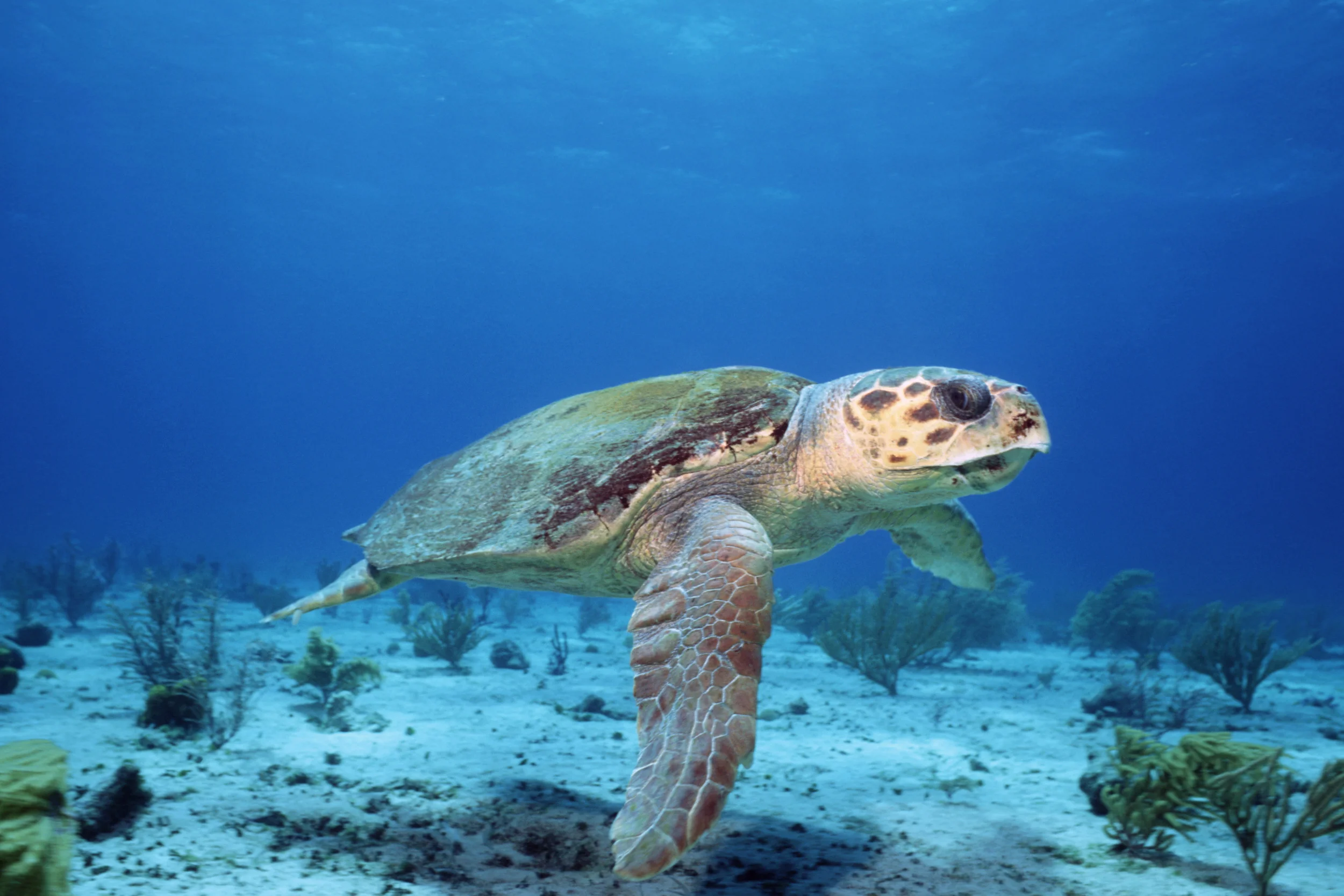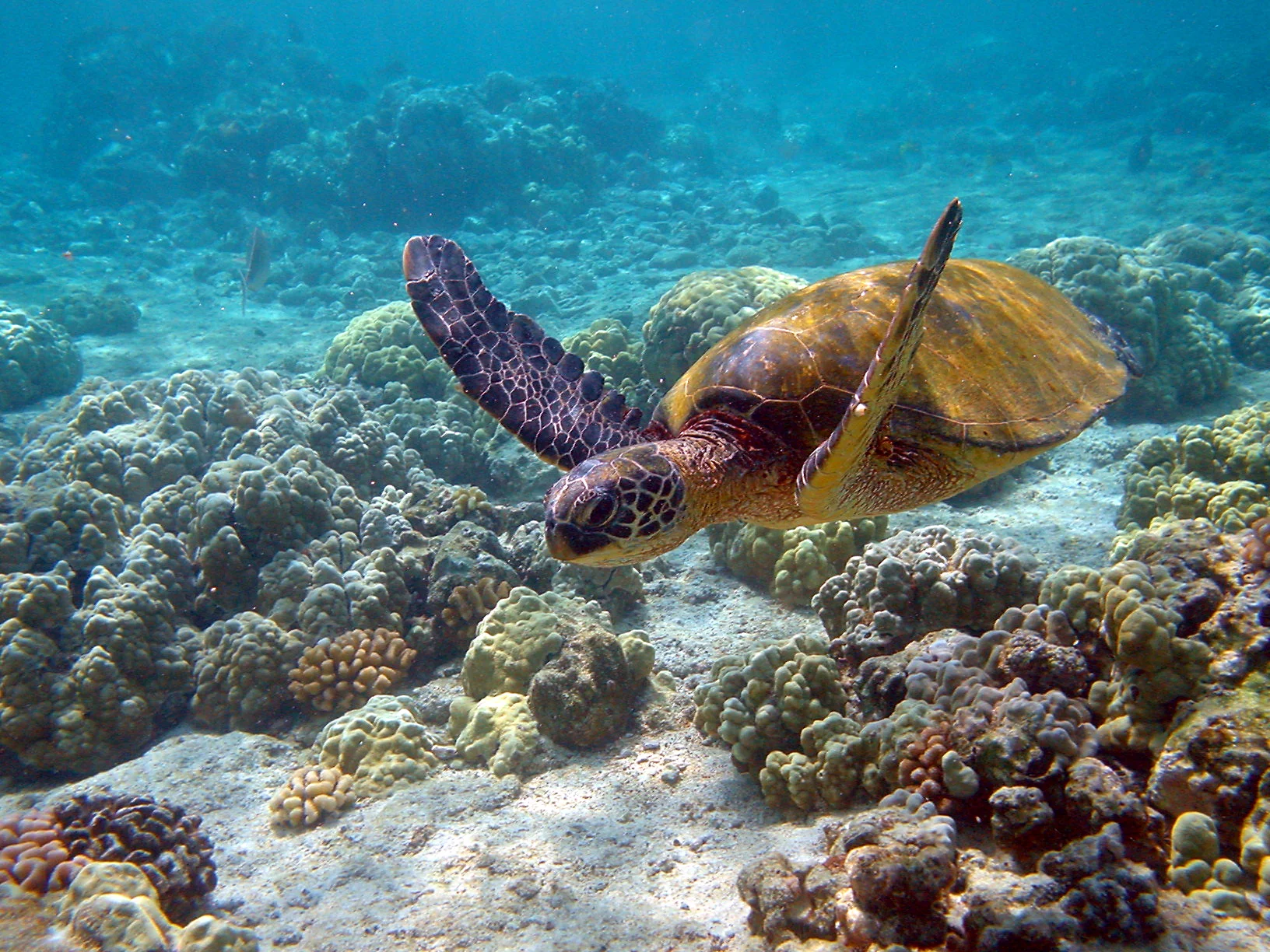OVERVIEW
The hawksbill turtle is a critically endangered sea turtle named for its narrow, pointed beak. They also sport a distinctive pattern of overlapping scales on their shells, forming a jagged look around the edges. These colored and patterned shells make them highly valuable and are often sold as "tortoiseshell" in markets. Hawksbill turtles are found in the tropical reefs of the Indian, Pacific and Atlantic oceans. Their diet consists primarily of sponges, using their long, narrow beaks to pry them from crevices in the reef. However, they are also known to eat sea anemones and jellyfish.
Hawksbill turtles were almost hunted to extinction prior to the ban on tortoiseshell trade; it is estimated that Japan imported 2 million turtles between 1950 and 1992. Despite the fact that the international trade of their shells is now illegal, there is still a thriving black market. As a result, the sea turtle population has declined by over 80% in the past century.
Sea turtles are a fundamental link of marine ecosystems and help maintain the health of coral reefs and sea grass beds.
DID YOU KNOW?
- Because of their sponge diet, hawksbill turtles' flesh is harmful to humans. Sponges contain toxic chemical compounds which accumulate in the turtles' tissue. The consumption of their meat by humans may cause serious illness and in extreme cases, even death.
- Hawksbills are important inhabitants of coral reefs. By consuming sponges, they play an important role in the reef community, aiding corals in growth. It's estimated that one hawksbill turtle can consume over 1,000 pounds of sponges per year. Without them, sponges have the ability to overgrow corals and suffocate reefs.
- The IUCN has rated hawksbill turtles as critically endangered.
- The hawksbill turtle's scientific name is Eretmochelys imbricata.







